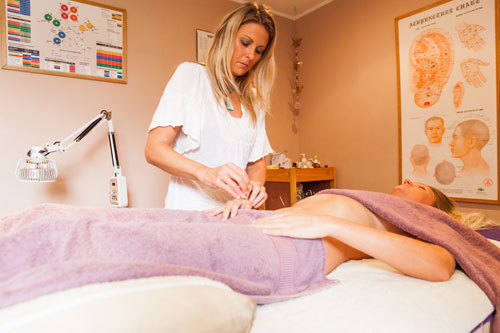

Acupuncture
Acupuncture is a natural, age old therapy used to treat many common and complex ailments. As a natural form of healing, acupuncture provides drug free pain relief, treating the symptoms as well underlying causal organ imbalances . Linking the mind, body and spirit, acupuncture may assist or support in the prevention of disease and illness and the maintenance of general health and well being.
The origins of acupuncture can be traced back as far as 5 000 years to China, making it one of the oldest and most long-standing health care systems in the world. Today, acupuncture is an effective, safe, natural and increasingly popular form of health care that is used by people from a wide range of cultural and social backgrounds.
Chinese Medicine is a holistic health system that views the mind, body and spirit to be intimately connected. It is based on a coherent and substantial body of knowledge developed over thousands of years of clinical practice and intellectual endeavor. Modern clinical research adds to this traditional knowledge. Qualified practitioners draw on these traditional and modern sources to arrive at individually tailored acupuncture treatments.
This system was developed from the philosophy that restoring balance will both treat ailments and prevent further illnesses from developing. Treatments target not just the presenting signs and symptoms, however, the underlying conditions, other health problems and the general state of health and well- being of the patient are also considered. What is unique about Chinese medicine is that although most diseases or illnesses present with a core set of recognizable signs and symptoms, the actual presentation of that illness will vary from person to person and therefore, people with similar health conditions may be provided with quite different acupuncture treatments.
In the past 20 years, research into acupuncture as a medical treatment has grown exponentially, increasing at twice the rate of research into conventional biomedicine.
The Acupuncture Evidence Project reviewed the effectiveness of acupuncture for 122 treatments over 14 clinical areas. They found some evidence of effect for 117 conditions. “Our study found evidence for the effectiveness of acupuncture for 117 conditions, with stronger evidence for acupuncture’s effectiveness for some conditions than others. Acupuncture is considered safe in the hands of a well-trained practitioner and has been found to be cost-efective for some conditions. The quality and quantity of research into acupuncture’s effectiveness is increasing.” Acupuncture Evidence Project, p55
The goal of acupuncture therapy is to establish a healthier state of body function and to increase the capacity to cope with stress. The human body can be likened to a highly complex electrical circuit. Like any electrical circuit, it must be kept in good working order if it is to function effectively. If the human circuit breaks down the result is illness.
Each person has an energy circulation. To maintain good health, it is essential that the body’s energy as well as the blood, circulate in a continuous and unobstructed manner. The pathways through which the energy flows are called meridians and these circulate through the organs and tissues of the body. The energy which flows along the meridians is called Qi (pronounced chi). These meridians were mapped out by the ancient Chinese. Modern technology methods such as Kirlian photography, electronic and thermal readings are now being used to detect these meridians. There are hundreds of acupuncture points in the body and these lie along the meridians. By stimulating these points with needles, the quality and quantity of energy can be balanced.
Qualified practitioners are educated in Traditional Chinese Medicine (TCM) theory, diagnosis and assessment as well as the Western bio-medical sciences. They are professional trained in the use of acupuncture to treat a wide range of chronic and acute health problems. Many acupuncturists also use herbs, massage, counseling, and dietary and lifestyle advice.
Most people after experiencing their first one reply ‘oh is that it?’ An acupuncture treatment consists of inserting these fine, sterile needles into specific sites (acu-points) along the body’s meridians. Stimulating these acu-points clears energy blockages and encourages the normal flow of qi through the body. When the needles enter, you usually do not feel much until it hits the meridian where the energy flows. This in turn creates various sensations in the body such as tingling, buzzing, throbbing, pulsating, electricity or radiating feelings etc, and then you know and can feel that the qi or energy has been stimulated. The practitioner may also stimulate the acupuncture points using other methods, including moxibustion or heat therapy, cupping, laser therapy, electro-stimulation and massage in order to re-establish the flow and balance of qi within the body.
If you would like to request an appointment for your Acupuncture requirements, or make a further enquiry about how Chinese medicine can help your condition. Please call us on 02 6685 1088.
